
4 minute read
Thomas Tanfield, Heritage Photographer, Richard K Evans
Born in 1863 in Beverley, Yorkshire, Thomas Tanfield became a pre-eminent amateur photographer in the era of glass plates and large field or stand cameras. As well as archaeology and architecture, most importantly he recorded the everyday life of East Yorkshire, in rural villages and in stately homes. Here his grandson, A & H Group member Richard K. Evans, recalls Thomas Tanfield’s life and work.
The unusual five-sailed whiting mill at Hessle, on the river Humber. It ground chalk from the adjacent quarry, which was then shipped in barges from wharves on the foreshore. Powdered chalk was widely used in agriculture to neutralise soil acidity. Detail from 14 x 5-inch sepia print made about 1900.
Our living heritage, and the recording of past life and times, is as important as are the stones and timbers of our built heritage. This was my maternal grandfather’s major contribution to “heritage photography”, and though we may justly admire his glass-plate negatives and prints of such structures as Beverley Minster, Furness Abbey and Bolton Castle, it is for his carefully composed pictures of day-by-day activities in the East Riding of Yorkshire that he is best remembered.
Thomas Tanfield was born in May 1863 in the market town of Beverley. It was here that in his late 20s he established what was to become a thriving dealership in bicycles and, later, motor-cycles. This was his lifetime career. But the 1880s and ‘90s were also the decades in which for the first time the craft of photography opened up to the public at large. It was in 1880 that George Eastman began producing dry-emulsion glass plates in his loft in Rochester, New York; until then most sensitised materials had required the photographer to coat his own glass plates, then expose and process them while still wet or at the best semi-dry. Within a few years, amateur photographers could buy ready-coated sensitive plates, and a wide variety of cameras in which to expose them.
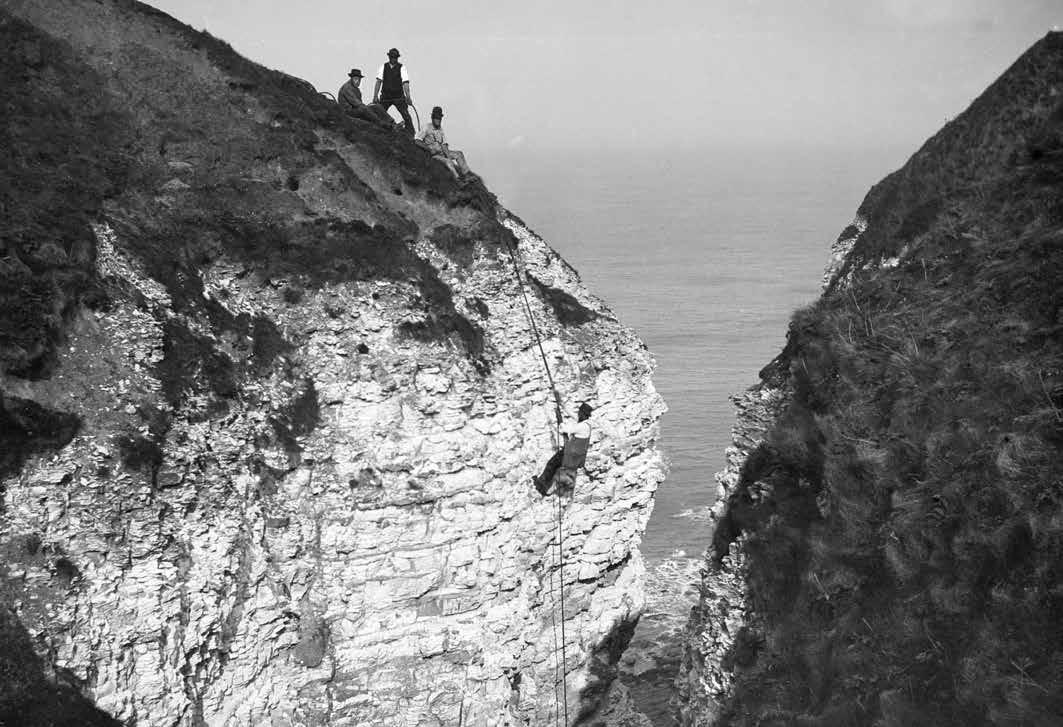
Gathering seabirds’ eggs from the cliffs at Flamborough Head, photographed in the late 1890s. Half-plate cut-film negative.

Hounds and horses - a Hunt meet at Bishop Burton, near Beverley. Quarter-plate glass negative.

Carter on a wintry road near Walkington. In a severe winter Wolds farms and villages could be isolated for weeks at a time.

The circus arrives in Beverley in the summer of 1896, parading from the station and through Wednesday Market Place on the way to its regular site on Beverley Westwood. Part of Thomas Tanfield’s cycle dealership can be seen on the left. Quarter-plate glass negative.
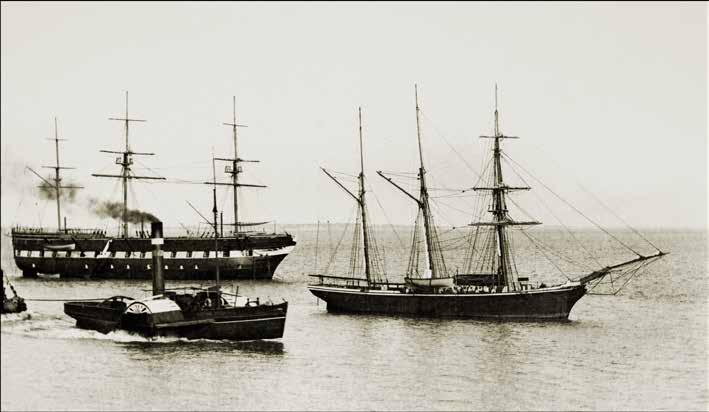
HMS Southampton and local vessels, off Corporation Pier, Hull. Possibly a visit in connection with Queen Victoria’s Diamond Jubilee in 1897. Quarter-plate glass negative.

Washing and watering horses, Long Lane, Beverley. Quarter-plate glass negative.
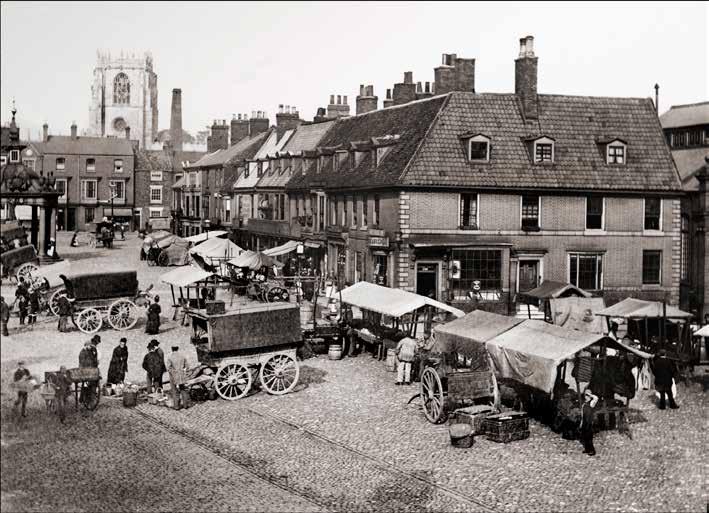
Saturday Market Place, Beverley. Quarter-plate glass negative.
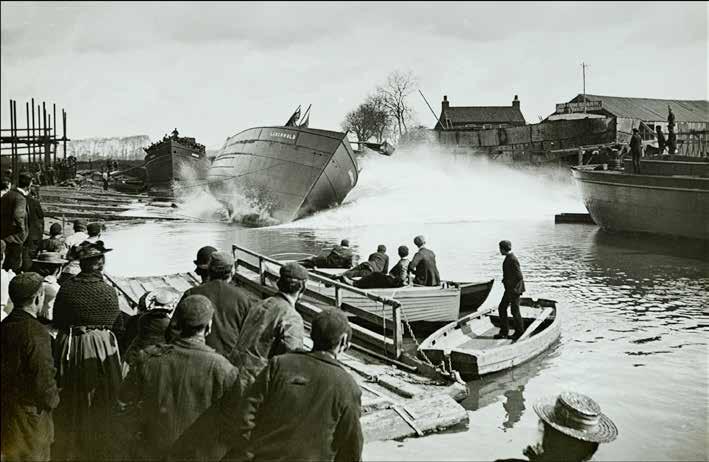
Launch of the steam trawler Larchwold at Beverley Shipyard. Vessels built here were launched sideways into the River Hull, then towed downriver some 8 miles to Princes Dock, Hull, where they were engined and fitted out. Quarter-plate glass negative.

Volunteer troops of the East Yorkshire Regiment, the Duke of York’s Own, prepare for inspection on Beverley Westwood. The 2nd Battalion was stationed at the Regimental HQ, Victoria Barracks in Beverley, between 1888 and November 1894, when it was deployed to Ireland. This picture was made during that time. Quarter-plate glass negative.
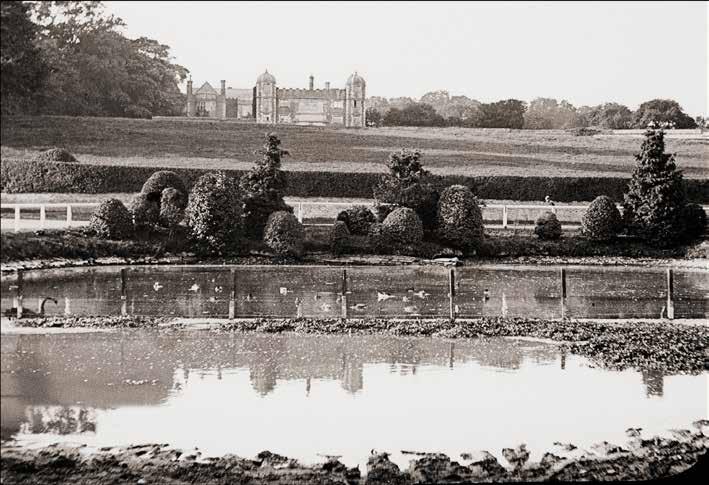
Londesborough Park, near Pocklington, in 1899. The original Elizabethan Hall, home of the Earls of Cumberland, was demolished in 1819 and replaced by this Victorian country house. Quarter-plate glass negative.
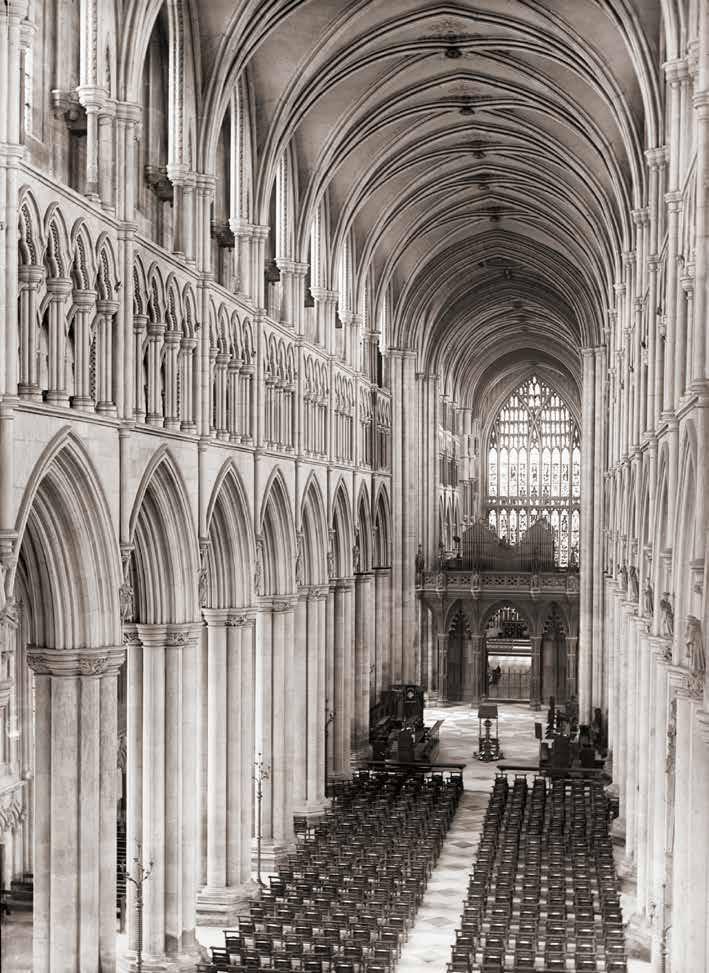
Beverley Minster, vie to the altar and east window. Half-plate glass negative, 1906.
Thomas Tanfield purchased his first camera in 1886, when he was 23. It was a single-extension, wholeplate (8½ x 6½ inch) Lancaster, one of just three cameras he was to own during the next 30 years. Like all such instruments of its size, it called for a hefty and heavy wooden tripod, and within a few years he bought two smaller cameras, half-plate and quarter-plate respectively – a Thornton-Pickard and a second Lancaster. He also set up a darkroom, making contact prints from the larger camera and printing enlargements from the others. I recall as a child standing on a chair, head under the essential black cloth, while my grandfather explained the inverted, veiled image before my eyes on the whole-plate focussing screen. These were, I believe, the only cameras he ever owned. All three survived for his entire lifetime; they were inherited by my parents after his death, and in 1968 my father consigned the cameras and five lenses to Christies’ auction house in South Kensington, where they realised a total of just over £900. But, importantly, my parents retained his surviving glass plates, cut-film negatives and a few prints – as a competent photographer himself, my father appreciated their possible value to historians and donated many of them to the Ferens Museum and Art Gallery in Hull. He kept about 40; these I inherited and have used to make the illustrations accompanying this article.
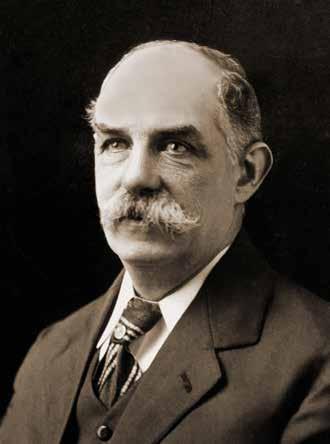
Thomas Tanfield - a studio portrait made about 1914.

Tomb of Lady Eleanor Percy in Beverley Minster. The Purbeck marble tomb and ornate canopy date from 1340. Half-plate glass negative, 1906.
Recording country life
Thomas Tanfield never owned a car. But not surprisingly, as a bicycle retailer, he cycled widely throughout East Yorkshire and further afield – notably to the Lake District, a 100-mile journey which both he and his daughter (Margery Irene, my mother) undertook on a number of occasions. He took many photographs of Beverley Minster, exterior and interior; an article which he wrote and illustrated for the Yorkshire Archaeological Society in 1918 describes the Minster’s carved misericord seats. But it was rural life and industries which interested him most, and these I hope are typified by the pictures I have chosen to show here. As far as I can ascertain, Thomas Tanfield ceased his photography by the outbreak of the First War, concentrating on his business interests. In the early 1930s, following the death of his wife Ida Jane, he moved to the village of Hessle, on the river Humber a few miles south of Beverley, and lived there contentedly until his peaceful death at home in 1950, at the age of 86.
RICHARD K. EVANS

